Fragment of a stele representing two Tirthankaras
India
Jain culture
VIII – Xth century
°°° Price can be reasonably negotiated °°°
The two saints are represented naked, seated in a small niche, each in a position of meditation: legs in the attitude of the lotus (vajraparyanka), hands placed in their lap (dhyana mudra), the back of the right hand resting on the palm of the left hand. They are surrounded by volutes, each of the bases receiving a frieze of gadroons. The two Tirthankaras present broad shoulders and a powerful torso, a slender waist, the face with closed eyelids in interior contemplation. In spite of the erosion, one distinguishes on the Tirthankaras from the bottom the rhombus on the chest (shrivatsa).
Jainism is one of the three great ancient religions of India. Mahavira, its historical founder lived between 540 and 468 BC and is a contemporary of the Buddha. According to the doctrine, Mahavira would have been preceded by 23 other Tirthankara (ford-makers) named Jina (winners). With the other classical religions of India, Jainism shares the same faith in the cycle of existences (samsara) and in the periodic decline of the world. In order to free oneself from this cycle, the Jain doctrine recommends an ascetic behavior advocating the renunciation of earthly attractions as well as non-violence (ahimsa, or 'desire not to harm') towards all forms of life, the ahimsa representing the doctrine cardinal of Jainism.
Sandstone
21.2 x 10.3 cm
Surface wear, visible losses
Private collection




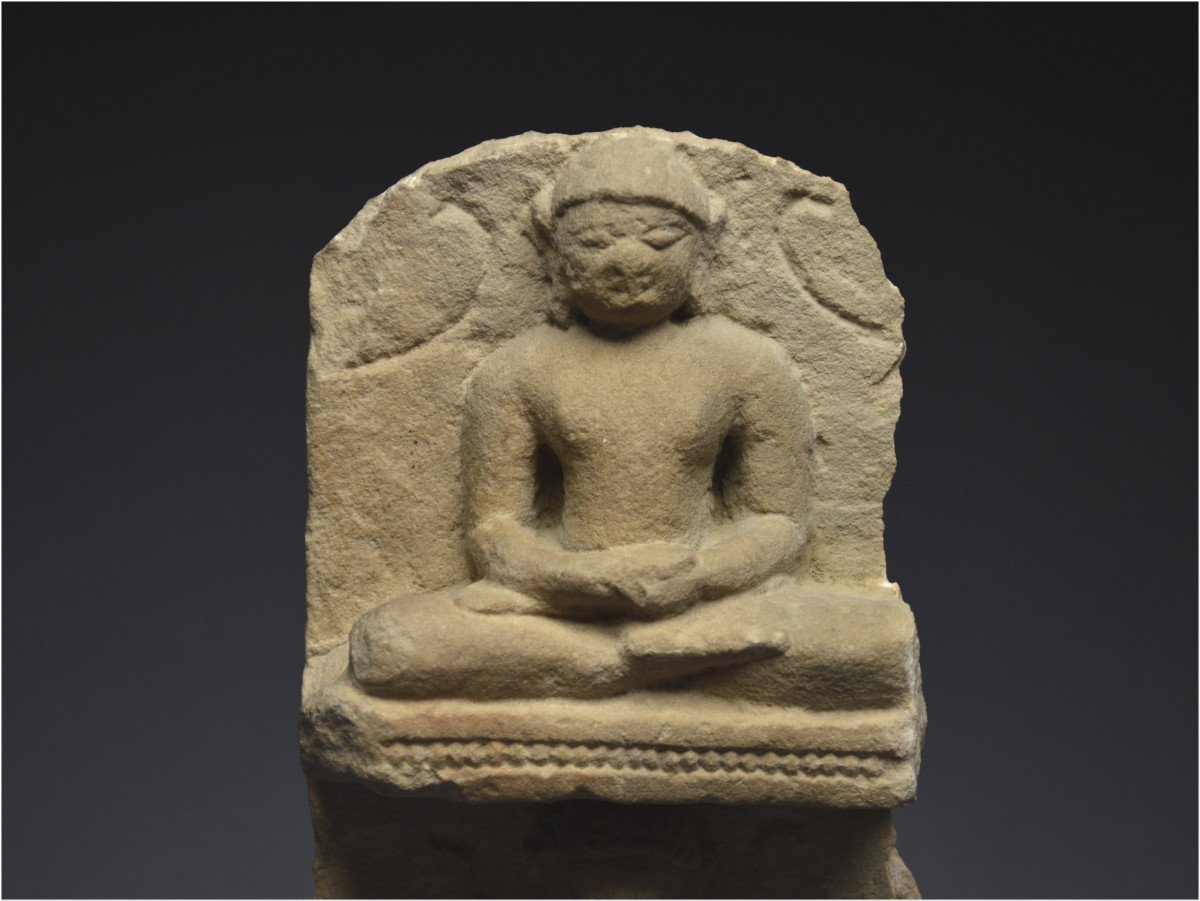
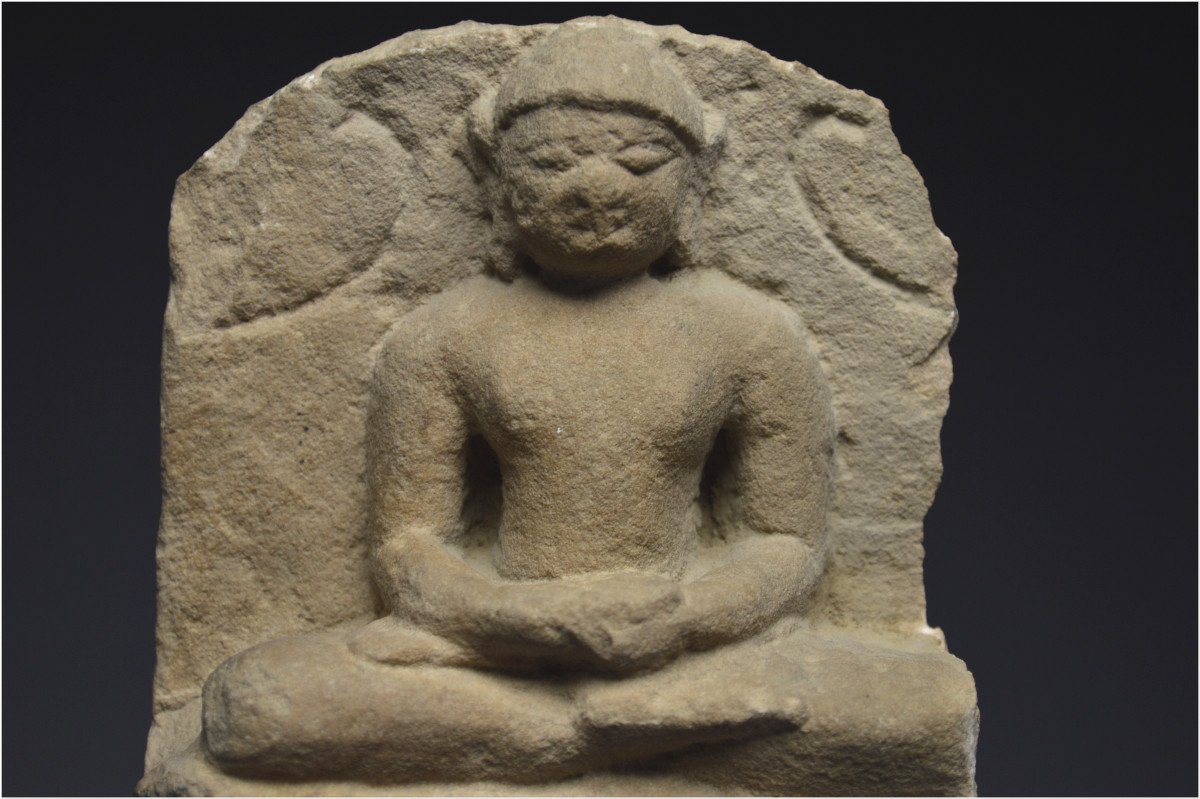
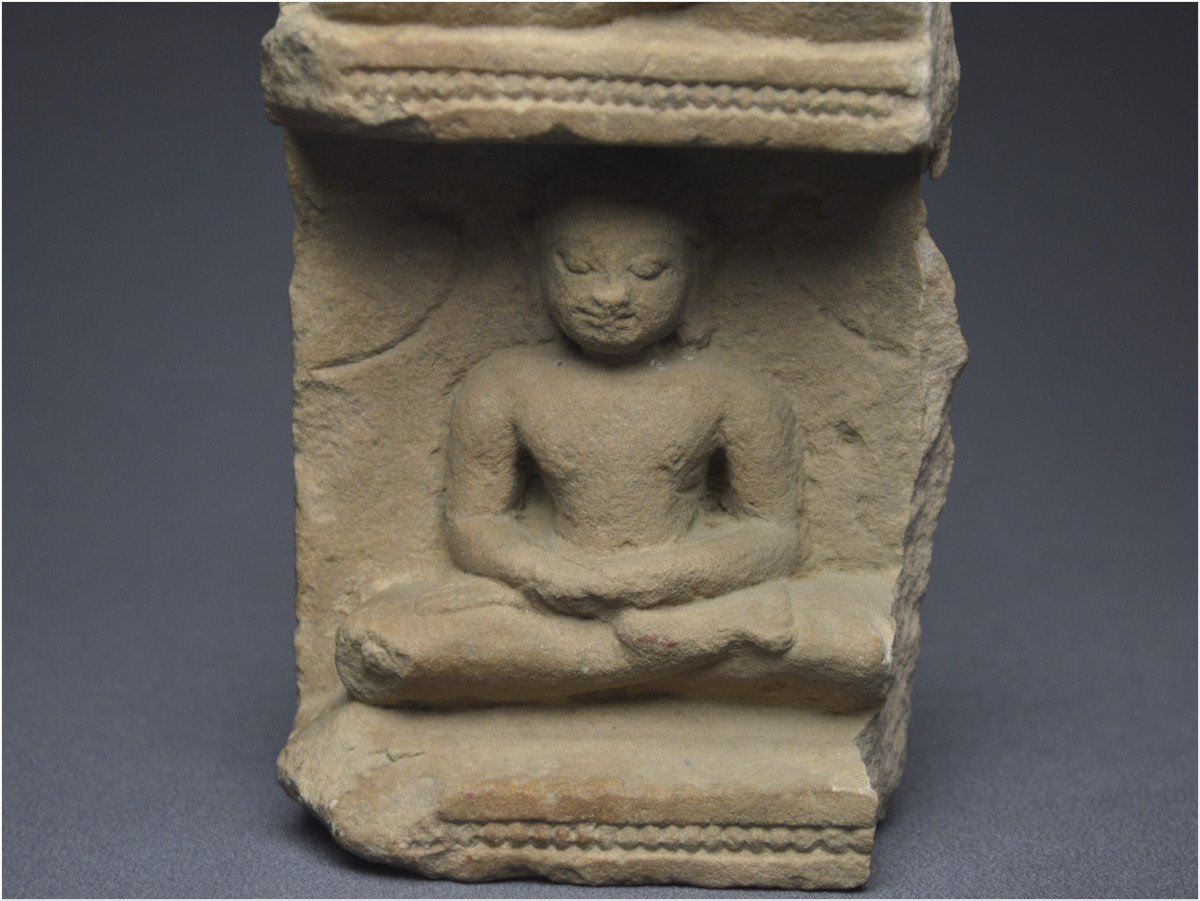
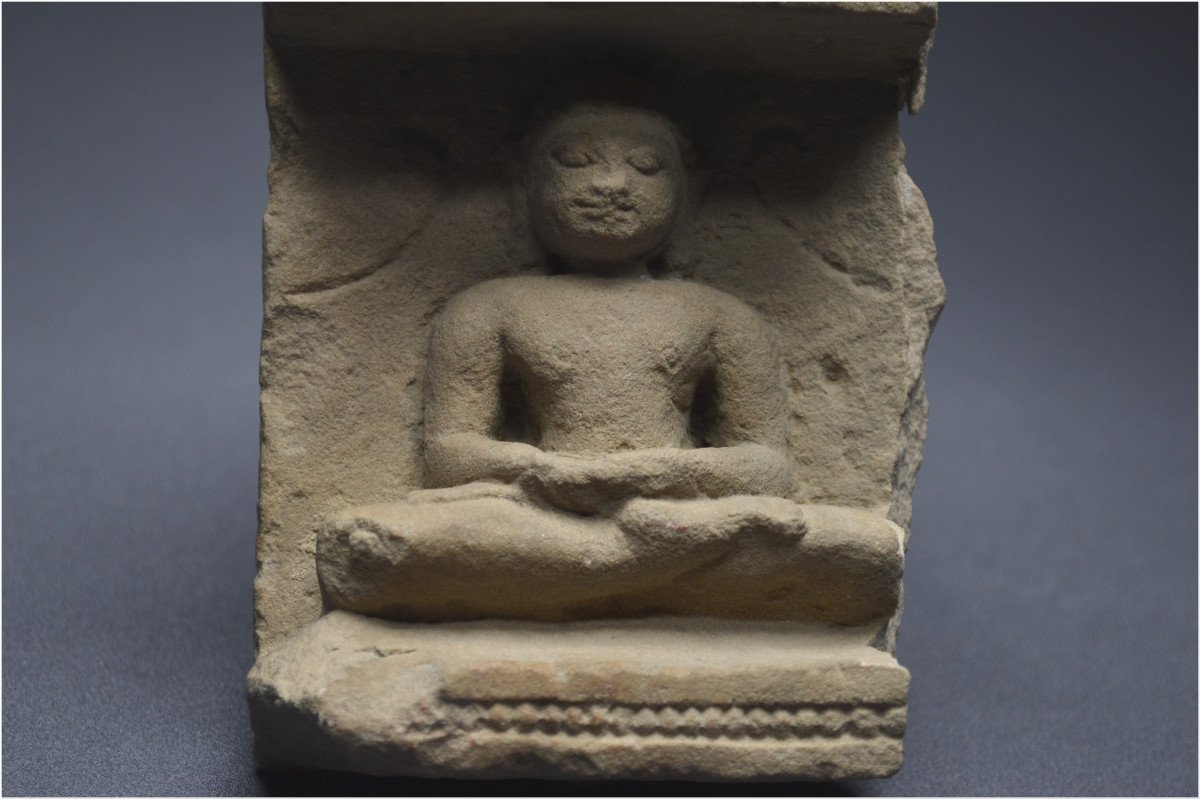
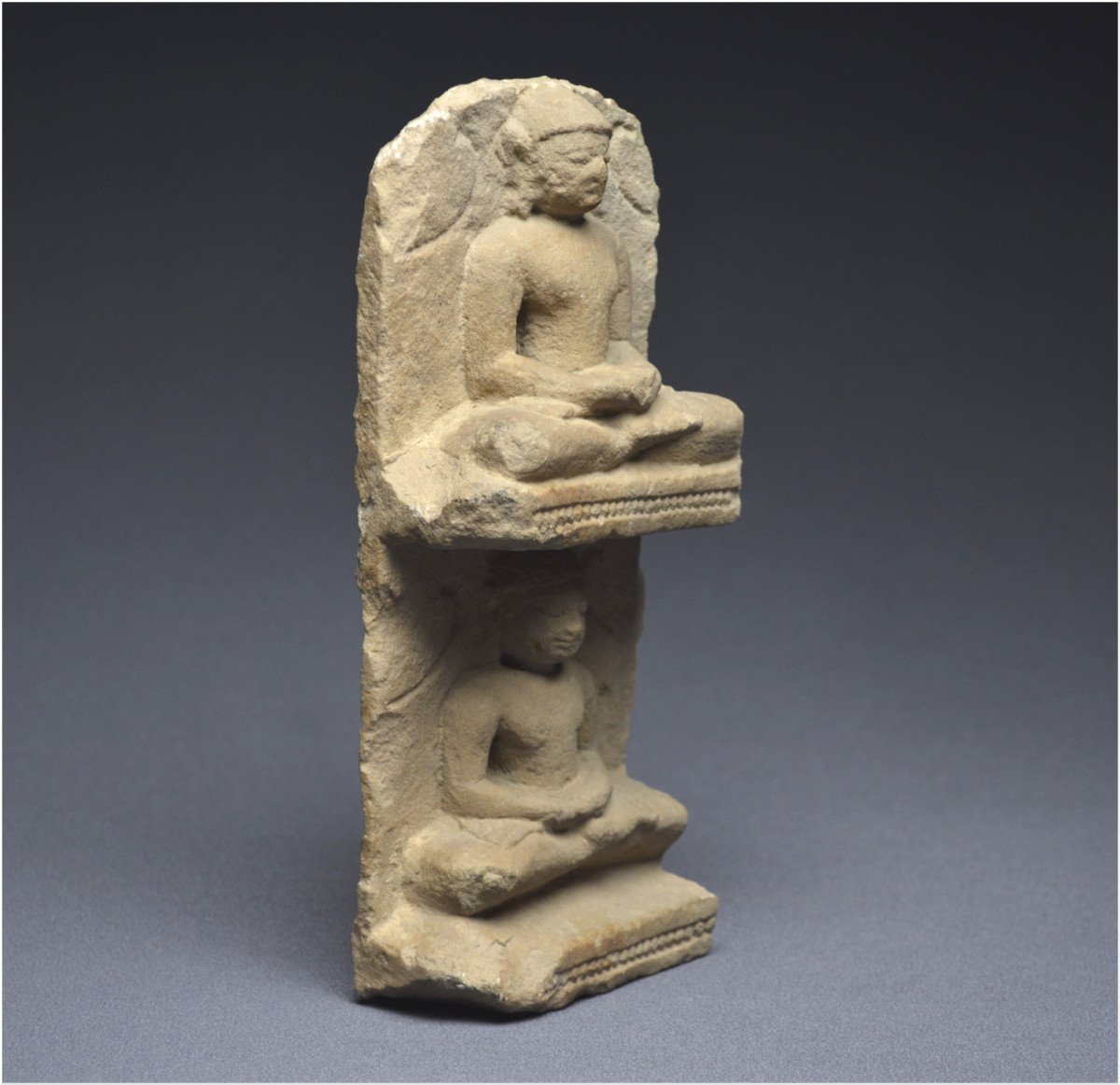
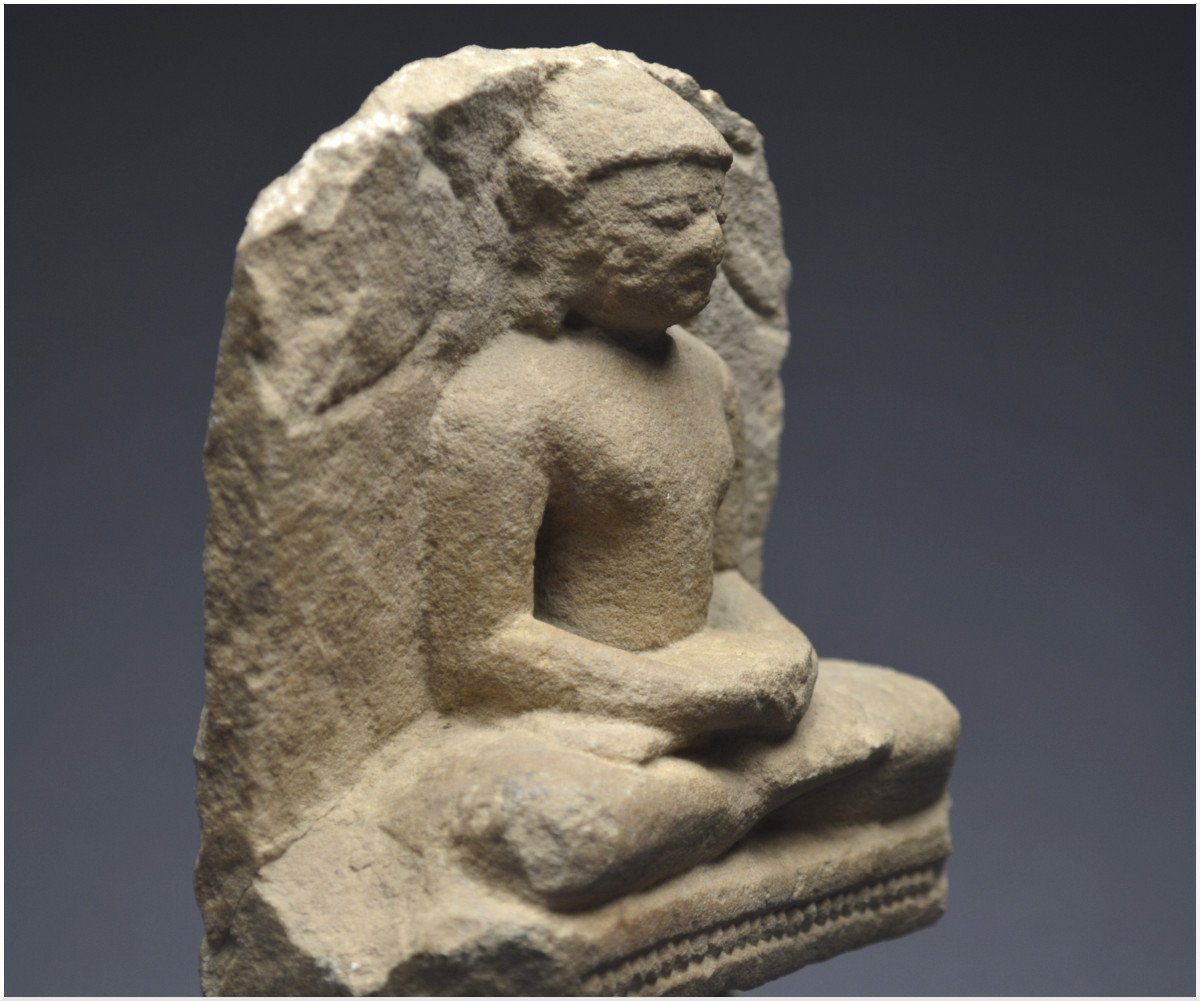

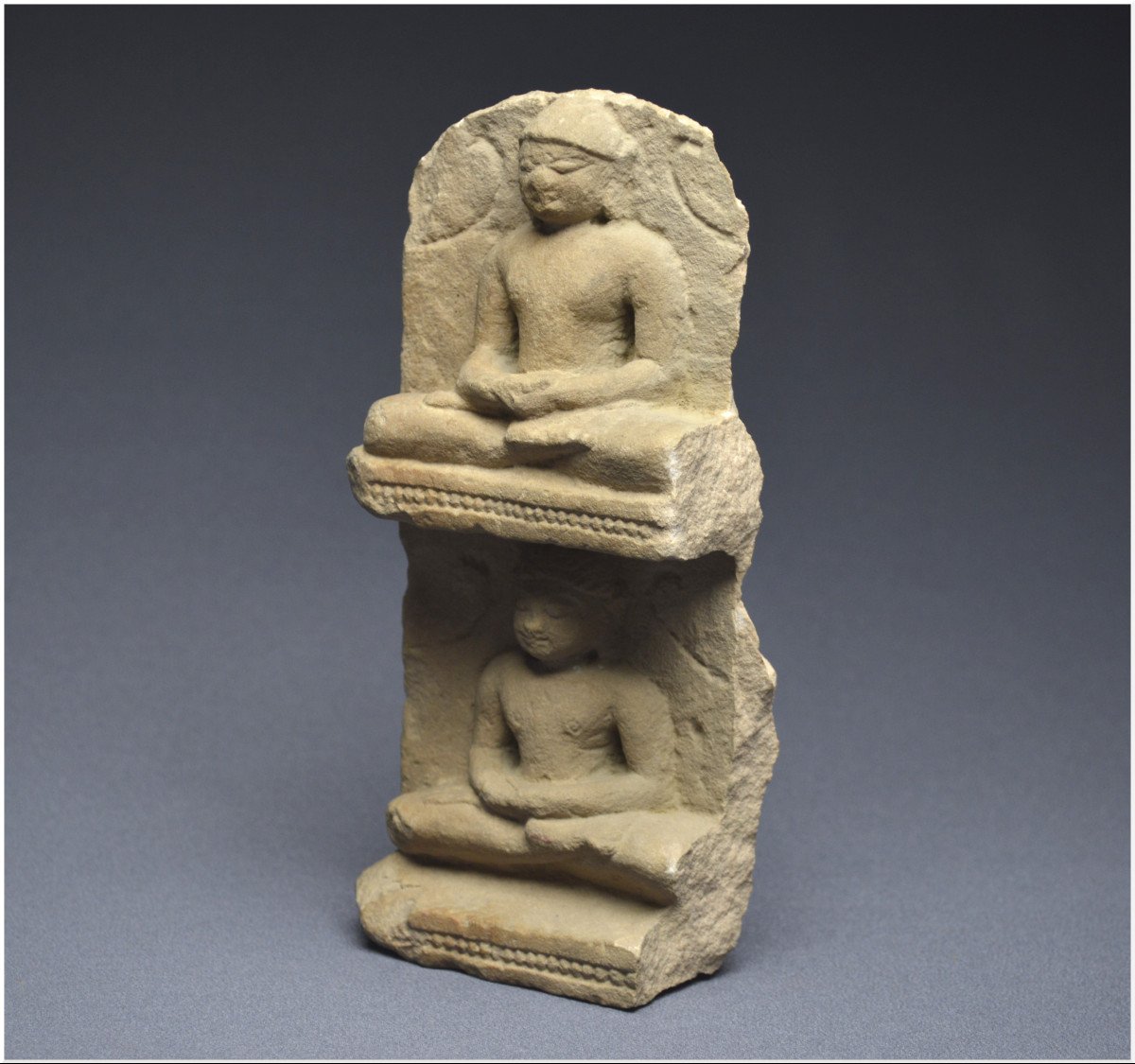
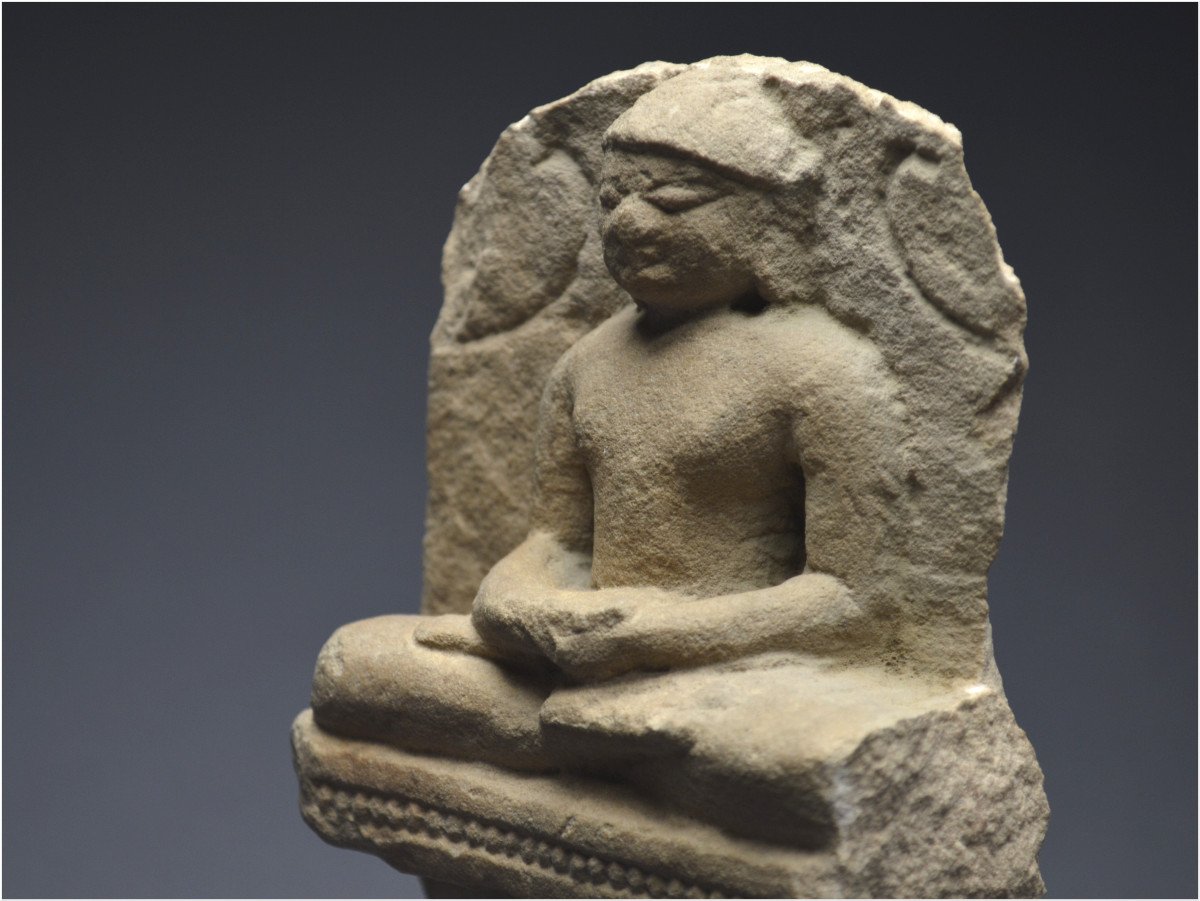
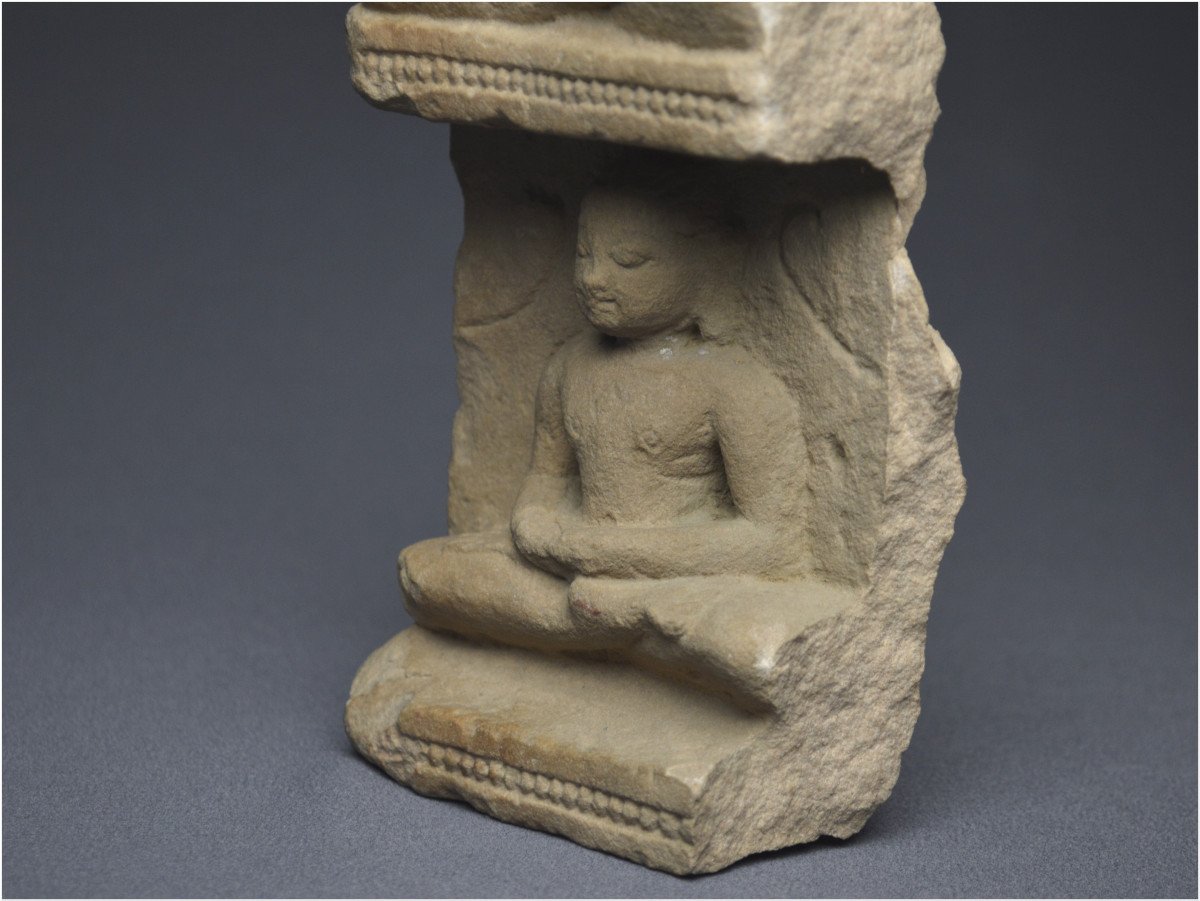
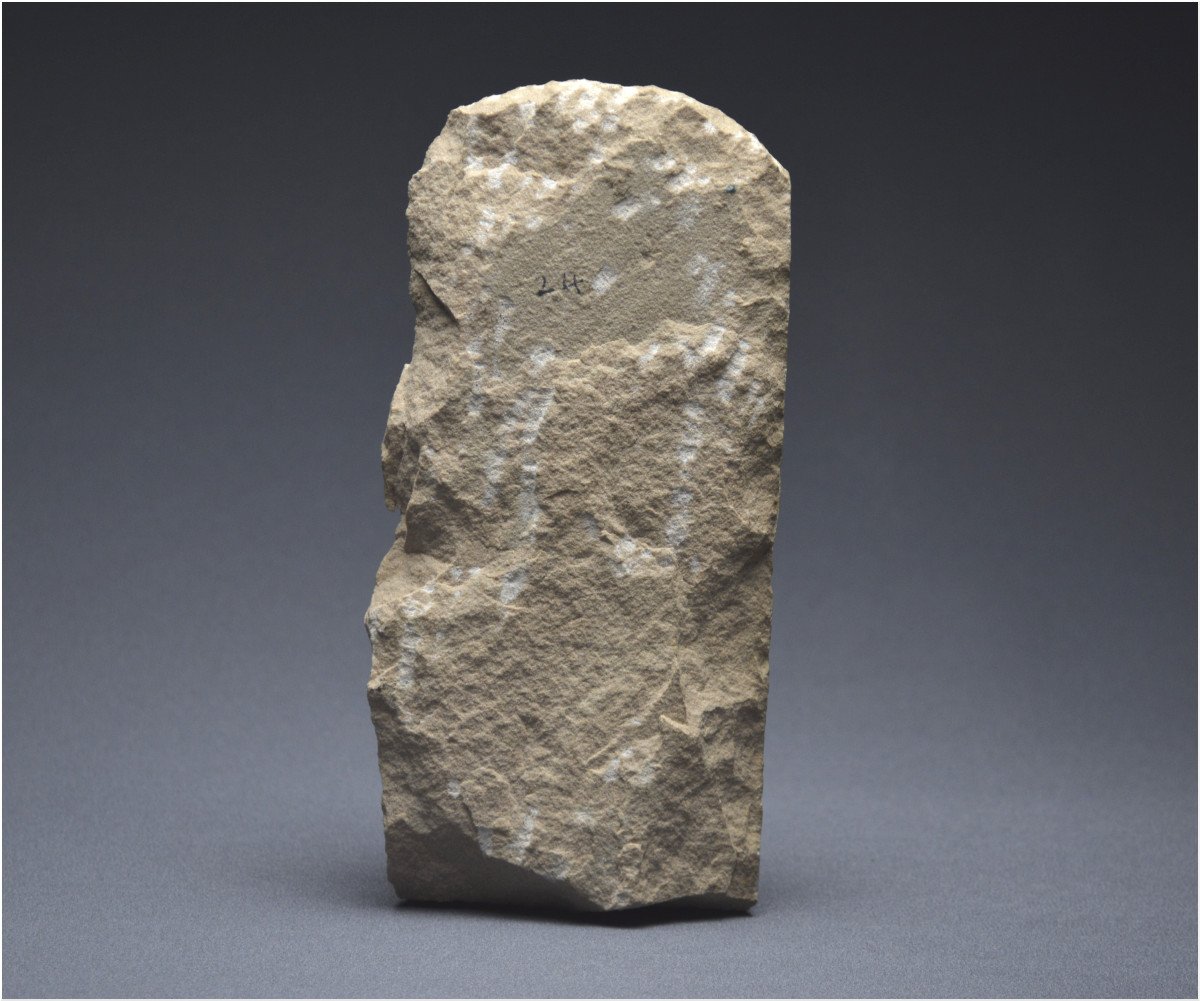
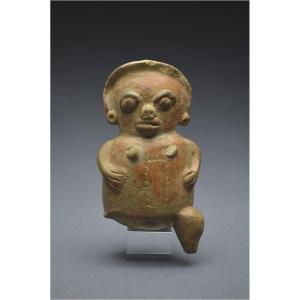
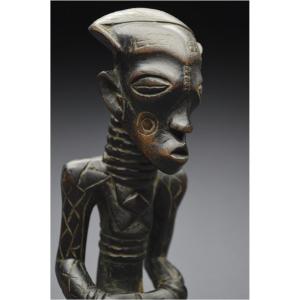


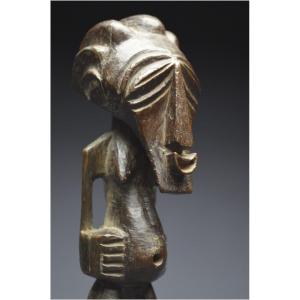










 Le Magazine de PROANTIC
Le Magazine de PROANTIC TRÉSORS Magazine
TRÉSORS Magazine Rivista Artiquariato
Rivista Artiquariato
